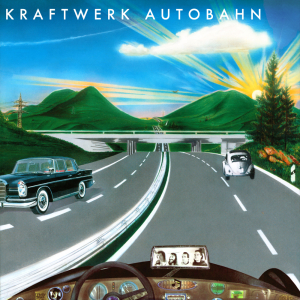Jude Rogers at The New Statesman:
 Fifty years ago in West Germany, a country at the heart of the growing European Communities, several innovations jumped off the production line. One was a government led by a new, outward-looking chancellor, Helmut Schmidt, who helped set up the first World Economic Summit in 1975. Another was the Volkswagen Golf, a car with an in-built radio and cassette player, perfect for cross-continental drives.
Fifty years ago in West Germany, a country at the heart of the growing European Communities, several innovations jumped off the production line. One was a government led by a new, outward-looking chancellor, Helmut Schmidt, who helped set up the first World Economic Summit in 1975. Another was the Volkswagen Golf, a car with an in-built radio and cassette player, perfect for cross-continental drives.
A view from a car windscreen was on the sleeve of Kraftwerk’s fourth album, Autobahn, released in November 1974. Painted by artist Emil Schult, it evoked a promise of going somewhere else, somewhere new: green triangular hills sit in the distance, the sun’s rays sparking behind them. It arrived as Germany’s identity as a country was changing under the younger, post-Second World War generation. So was its sound. Other young German bands like Can and Neu!, were popularising the motorik beat – a relentless, propulsive, pulse. Kraftwerk were morphing from a progressive art-rock band into an electronic one, liberated by new technology.
more here.
Enjoying the content on 3QD? Help keep us going by donating now.
